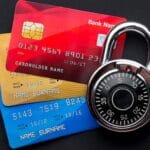In the labyrinthine world of credit, knowing your secured from your unsecured can save you a heap of trouble (and money). These two types of plastic offer different benefits and pitfalls, so understanding their nuances is key to mastering your personal finances. Buckle up as we navigate the twists and turns of secured and unsecured credit cards.
The Basics: Secured Credit Cards
What Is a Secured Credit Card?
A secured credit card is like training wheels for your financial bicycle. It requires a cash deposit upfront, which typically sets your credit limit. Think of it as a safety net, reassuring the bank that you’re good for the money.
How Does a Secured Credit Card Work?
You deposit, you spend, you pay. Simple, right? The deposit you put down acts as collateral. If you miss payments, the bank dips into this deposit. It’s a way for those with limited or shaky credit history to prove their mettle.
The Basics: Unsecured Credit Cards
What Is an Unsecured Credit Card?
Unsecured credit cards are the high-wire act of the credit world. No deposit required. The bank trusts you based on your credit history, income, and a sprinkle of financial voodoo.
How Does an Unsecured Credit Card Work?
With no collateral to fall back on, these cards are issued based on your financial reliability. You get a credit limit, spend up to it, and repay with interest if you don’t clear the balance each month. Simple, but potentially perilous if mishandled.
Key Differences Between Secured and Unsecured Credit Cards
Collateral: The Security Deposit
Secured cards need a deposit, unsecured ones don’t. This upfront cash for secured cards acts as a security blanket for both you and the bank, reducing the risk.
Credit Limits: Setting Boundaries
Secured cards’ limits are tied to your deposit, making them relatively low. Unsecured cards, depending on your creditworthiness, can offer more generous limits, giving you financial breathing space.
Approval Criteria: Who Gets What?
Secured cards are easier to get since they pose less risk to the issuer. Unsecured cards require a solid credit history and decent income. They’re the bank’s way of saying, “We trust you, but don’t mess it up.”

Pros of Secured Credit Cards
Credit Building: Starting from Scratch
Secured cards are a boon for those looking to build or rebuild credit. Use them wisely, pay on time, and watch your credit score climb. They’re the credit score’s best friend.
Controlled Spending: Financial Training Wheels
With limits tied to your deposit, overspending is less likely. It’s a great way to learn budgeting and responsible credit use.
Cons of Secured Credit Cards
Upfront Costs: The Deposit Dilemma
Coughing up a security deposit can be a pain, especially if funds are tight. It’s money that’s tied up and not available for other uses.
Limited Rewards: No Frills, Just Bills
Secured cards rarely offer the rewards and perks you see with unsecured cards. They’re more about function than frills.
Pros of Unsecured Credit Cards
Perks and Rewards: Earning While Spending
Unsecured cards often come with tantalizing rewards programs. Cash back, travel points, and exclusive perks make spending feel like less of a chore.
Higher Credit Limits: Room to Breathe
These cards can offer higher credit limits, giving you more financial flexibility and the ability to handle larger expenses.
Cons of Unsecured Credit Cards
Higher Interest Rates: The Cost of Convenience
The downside? Higher interest rates. If you’re not careful, the cost of carrying a balance can quickly outweigh the benefits.
Approval Challenges: The Gatekeepers
Getting an unsecured card isn’t a walk in the park. Good credit and solid income are a must, making it tough for some to qualify.
When to Choose a Secured Creditteps
New to credit? Start with a secured card. It’s a safe way to learn the ropes without risking financial catastrophe.
When to Choose an Unsecured Credit Card
Established Credit Users: Taking the Next Step
Got a solid credit history? An unsecured card offers more benefits and higher limits. It’s the logical next step in your credit journey.
Reward Seekers: Maximizing Benefits
If you’re all about the rewards, unsecured cards are where it’s at. From cash back to travel points, they offer a smorgasbord of perks for savvy spenders.
How to Apply for Secured vs. Unsecured Credit Cards
The Application Process: Step-by-Step
Applying for either type of card involves filling out an application, providing financial details, and sometimes undergoing a credit check. For secured cards, you’ll also need to pony up that deposit.
What Lenders Look For: The Inside Scoop
Lenders scrutinize your credit history, income, and debt levels. For unsecured cards, they’re looking for reliability and the ability to repay.
Using Your Credit Card Wisely
Budgeting: Keeping Yourself in Check
Set a budget and stick to it. Both types of cards can tempt you to overspend, but discipline is key.
Payment Strategies: Staying Ahead of the Game
Pay your bill in full each month if possible. If not, prioritize high-interest debt and avoid minimum payments like the plague.
Improving Your Credit Score with Credit Cards
Credit Utilization: The Balancing Act
Keep your credit utilization low. Using less than 30% of your limit shows you’re managing your credit well.
Timely Payments: The Golden Rule
Pay on time. Every time. It’s the single most important factor in maintaining and improving your credit score.
Frequently questions (FAQs)
Making the Right Choice: Personalized Financial Strategies
When choosing a credit card, assessing your current financial health and future needs is crucial. With the right card and a solid strategy, you can navigate the world of credit confidently.
Differences Between Secured and Unsecured Credit Cards
- Secured Credit Cards: These require a cash deposit as collateral, which usually sets the credit limit. They are ideal for individuals with limited or poor credit histories.
- Unsecured Credit Cards: These do not require a deposit and typically offer higher credit limits. They are suited for those with an established credit history.
Upgrading from Secured to Unsecured Credit Cards
Many banks allow users to upgrade their secured credit cards to unsecured ones after demonstrating responsible use, such as making timely payments and maintaining a good credit score (SoFi) (SoFi).
Building Credit with Secured Credit Cards
Secured credit cards are effective tools for building or rebuilding credit. Responsible usage and on-time payments can significantly improve your credit score over time (SoFi).
Evaluating Rewards on Unsecured Credit Cards
The value of rewards depends on your spending habits and credit management. If you pay off your balance monthly, rewards can be very beneficial. However, carrying a balance can negate these benefits due to high-interest rates (SoFi).
Consequences of Defaulting on Secured Credit Cards
If you default, the issuer can use your deposit to cover the outstanding balance, which will negatively impact your credit score, making it harder to qualify for future credit (NerdWallet: Finance smarter).
For more detailed insights, you can explore resources like NerdWallet and SoFi, which provide comprehensive guides on personalized financial strategies and credit card usage (NerdWallet: Finance smarter) (SoFi) (SoFi).
Key Takeaways: Secured vs. Unsecured Credit Cards
- Understanding the Basics: Secured credit cards require a cash deposit, making them ideal for those building or repairing credit. Unsecured credit cards don’t need a deposit and are based on creditworthiness.
- Collateral and Credit Limits: Secured cards use your deposit as collateral and set your credit limit accordingly. Unsecured cards offer higher limits based on your credit history and income.
- Approval Criteria: Secured cards are easier to obtain with limited or poor credit history. Unsecured cards require good credit and steady income.
- Pros and Cons:
- Secured Cards:
- Pros: Helpful for building credit, controlled spending.
- Cons: Requires upfront deposit, limited rewards.
- Unsecured Cards:
- Pros: Higher credit limits, attractive rewards programs.
- Cons: Higher interest rates, harder approval criteria.
- Secured Cards:
- When to Choose Each Type:
- Secured Card: Best for those rebuilding credit or new to credit.
- Unsecured Card: Ideal for established credit users and reward seekers.
- Application Process: Applying for both types involves filling out applications and undergoing credit checks. Secured cards also require a deposit.
- Using Credit Wisely: Budget carefully, pay bills in full to avoid interest, and keep credit utilization low to improve your credit score.
- Building and Improving Credit: Both types of cards can help build credit when used responsibly, but timely payments are crucial for maintaining a good credit score.
By understanding the differences and benefits of secured and unsecured credit cards, you can make informed decisions to enhance your financial health and credit profile.
Bottom Line
Choosing between secured and unsecured credit cards depends on your financial situation and goals. Whether you’re building credit from scratch, repairing past mistakes, or maximizing rewards, understanding these options will help you make informed, savvy choices.








